Growing Garlic at Home can seem intimidating, but trust me, it’s one of the most rewarding and surprisingly simple gardening projects you can undertake! Imagine the satisfaction of harvesting your own pungent, flavorful garlic, knowing exactly where it came from and how it was grown. Forget those bland, imported cloves from the supermarket; homegrown garlic is a whole different ballgame.
Garlic has a rich history, dating back thousands of years. Ancient Egyptians revered it, feeding it to the pyramid builders for strength and stamina. In many cultures, garlic is believed to ward off evil spirits and promote good health. Beyond its mystical properties, garlic is a culinary staple, adding depth and zest to dishes around the world. But why settle for store-bought when you can easily cultivate your own supply?
That’s where this DIY guide comes in! I’m going to share some easy-to-follow tricks and hacks that will transform your backyard (or even a sunny windowsill!) into a thriving garlic patch. Whether you’re a seasoned gardener or a complete beginner, growing garlic at home is a fantastic way to connect with nature, reduce your grocery bill, and enjoy the unparalleled taste of freshly harvested garlic. Plus, it’s a great conversation starter! So, grab your gardening gloves, and let’s get started!
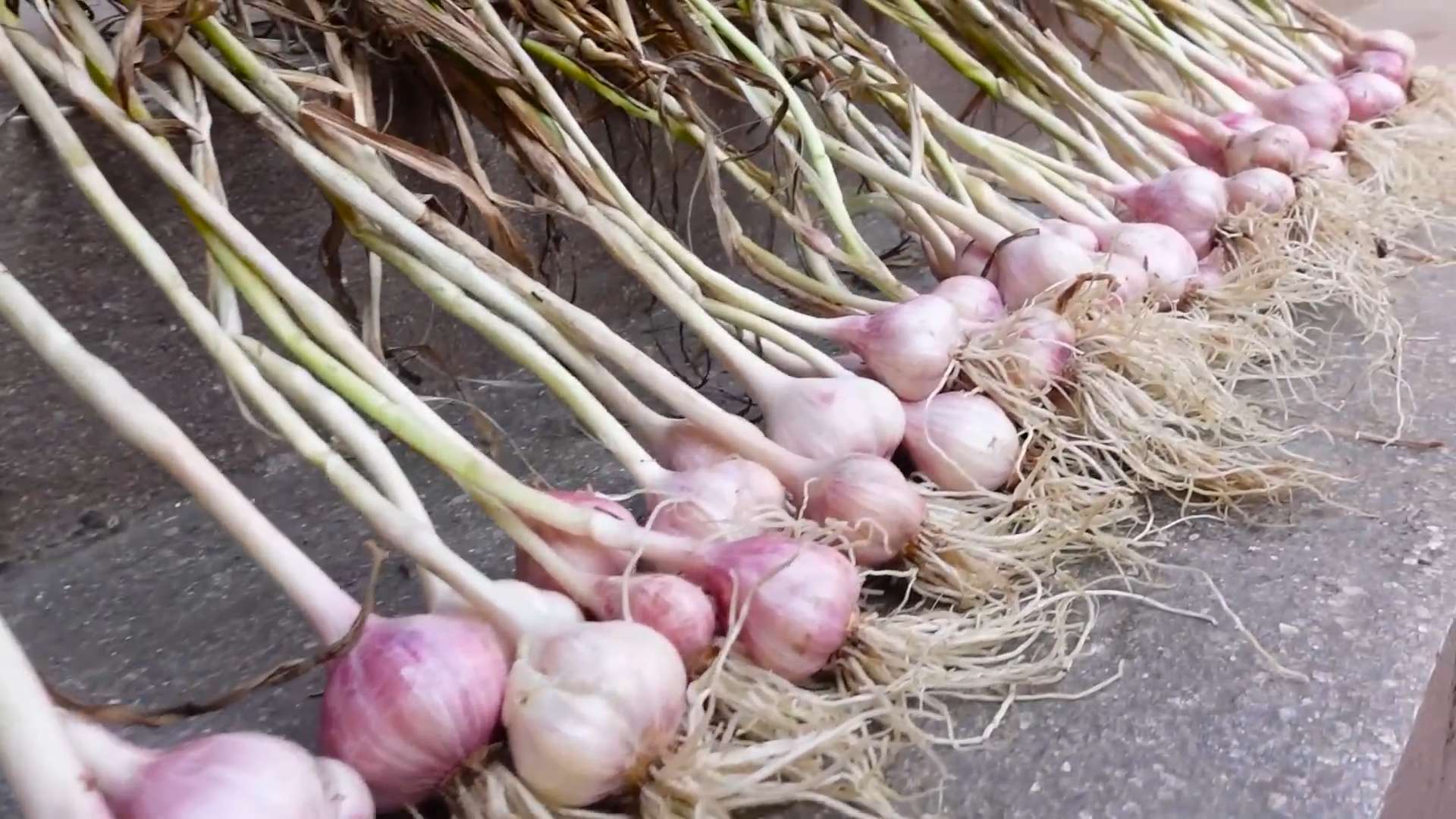
Growing Garlic: Your DIY Guide for a Bountiful Harvest
Hey garden friends! Have you ever wondered how to grow this aromatic all-rounder, garlic, yourself? I’ll show you how to achieve a bountiful garlic harvest with simple tools and a little patience. It’s easier than you think!
What you need for growing garlic
Before we get started, here is a list of the things you will need:
- Garlic cloves: Organic garlic from the supermarket or a farmer’s market is best. Avoid garlic from garden centers, as it has often been treated to prevent sprouting.
- Garden soil: Well-draining, loose soil is ideal. Heavy clay soils should be improved with compost or sand.
- Compost or organic fertilizer: For a good supply of nutrients.
- Watering can or garden hose: For watering.
- Garden tools: Spade, rake, possibly a trowel.
- Mulch material: Straw, leaves, or grass clippings to keep the soil moist and suppress weeds.
- Patience: Garlic takes time to grow!
The right time to plant
The best time to plant garlic is in the fall, about 4-6 weeks before the first frost. This gives the cloves enough time to form roots before winter arrives. This is especially important in colder regions. If you missed the fall window, you can also try planting in the spring, but the harvest will likely be smaller.
Step-by-Step Guide to Growing Garlic
Here is a detailed guide on how you can grow your own garlic:
1. Preparing the Soil
- Choose the location: Garlic needs a sunny spot with at least 6 hours of direct sunlight per day.
- Loosen the soil: Use a spade or digging fork to loosen the soil to a depth of about 20-30 cm. This facilitates root growth.
- Improve the soil: Mix plenty of compost or organic fertilizer into the soil. This ensures a good nutrient supply and improves the soil structure. I like to use well-rotted compost from my own compost pile.
- Remove weeds: Thoroughly remove weeds before you plant. Weeds compete with garlic for nutrients and water.
2. Preparing the Garlic Cloves
- Select the best cloves: Carefully separate the garlic bulb into individual cloves. Choose the largest and healthiest cloves, as these will produce the best plants.
- Do not peel: The outer skin of the cloves should remain intact as it protects the clove.
- Separate just before planting: Separate the cloves only shortly before planting to avoid drying them out unnecessarily.
3. Planting the Garlic Cloves
- Prepare planting holes: Dig planting holes that are about 5-8 cm deep.
- Keep your distance: Plant the cloves about 10-15 cm apart from each other. There should be a distance of about 20-30 cm between the rows.
- Plant them the right way up: Place the cloves in the holes with the pointed side facing up. The pointed side is where the leaves will grow from.
- Cover with soil: Fill the holes with soil and press it down lightly.
- Water: Water the planted cloves thoroughly to moisten the soil and encourage root growth.
4. Mulching
- Apply mulch: Cover the soil around the garlic plants with a layer of mulch (straw, leaves, or grass clippings). The mulch layer should be about 5-10 cm thick.
- Benefits of mulching: Mulch helps to keep the soil moist, suppress weeds, and protect the soil from frost in winter.
5. Care During Growth
- Water regularly: Make sure the soil stays evenly moist, especially during dry periods. Avoid waterlogging, as this can lead to rot.
- Remove weeds: Regularly remove weeds that grow around the garlic plants.
- Fertilize: Fertilize the plants in the spring with an organic fertilizer or compost tea to promote growth. I like to use diluted nettle tea.
- Remove flower stalks (optional): Some garlic varieties produce flower stalks (so-called “scapes”). If you remove these, the plant will concentrate its energy on developing the garlic bulb.
The Harvest
- The right time: Garlic is ready to harvest when the lower leaves turn yellow and die back. This is usually in the summer, about 8-9 months after planting.
- Dig up carefully: Carefully dig up the garlic bulbs with a digging fork to avoid damaging them.
- Clean: Remove the soil from the bulbs, but do not wash them.
- Dry: Tie the garlic plants into bundles and hang them in a dry, airy place to dry. Drying takes about 2-3 weeks.
- Store: Once the garlic bulbs are completely dry, you can cut off the leaves and roots and store the garlic in a cool, dry, and dark place. Well-stored garlic will last for several months.
Common Problems and Solutions
- Pests: Garlic is relatively resistant to pests, but onion flies can be a problem. Protect the plants with an insect net.
- Diseases: Downy mildew can occur, especially in damp weather. Ensure good air circulation and remove affected leaves.
- Rot: Waterlogging can lead to rot. Ensure good drainage and do not overwater.
Garlic Varieties
There are many different garlic varieties that differ in taste, size, and storability. Here are some popular varieties:
- ‘German Extra Hardy’: A robust variety with a strong flavor.
- ‘Music’: A popular variety with large bulbs and a mild flavor.
- ‘Spanish Roja’: A variety with a spicy taste.
- ‘Elephant Garlic’: Technically not a true garlic, but rather a type of leek. It has very large cloves and a mild taste.
Additional Tips for a Successful Harvest
- Practice crop rotation: Do not plant garlic in the same location every year to prevent diseases and pests.
- Test your soil: A soil test can help you determine the nutrient content of your soil and amend it accordingly.
- Observe: Regularly check your plants for signs of pests or diseases and act early.
Why you should grow your own garlic
There are many reasons why it’s worth growing your own garlic:
Organic quality: You have control over the growing methods and can ensure that your garlic is grown without pesticides and chemicals.
Fresh taste: Homegrown garlic tastes much more intense and aromatic than garlic from the supermarket.
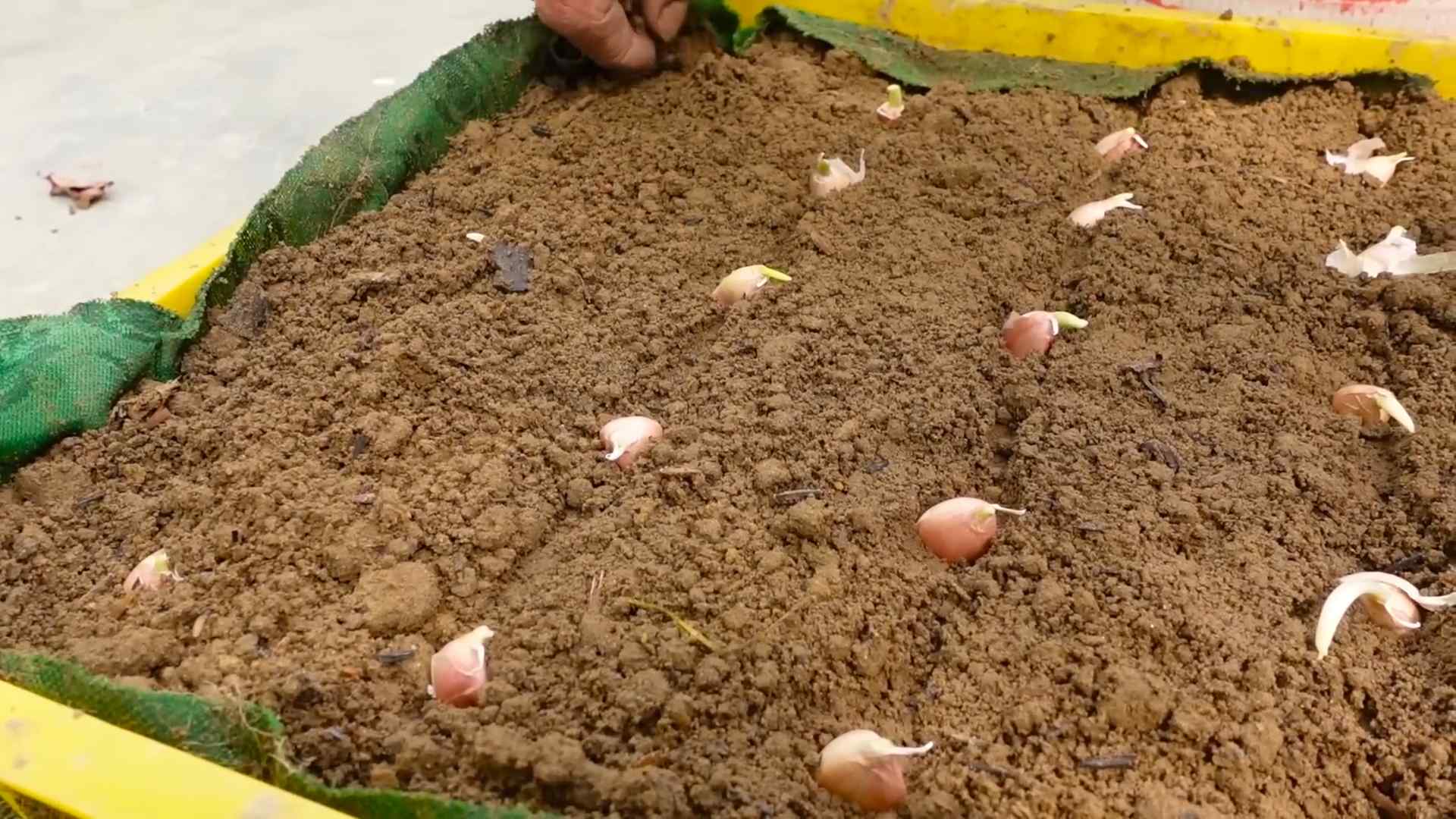
Conclusion
So, there you have it! Growing garlic at home isn’t just a gardening project; it’s an investment in flavor, freshness, and a deeper connection to the food you consume. We’ve walked through the simple steps, debunked common myths, and armed you with the knowledge to cultivate your own pungent cloves.
Why is this DIY trick a must-try? Because the garlic you buy in the store simply can’t compare to the vibrant, robust taste of homegrown garlic. Think about it: store-bought garlic often travels long distances, losing its potency and freshness along the way. Plus, you have no control over the growing conditions or the use of pesticides. When you grow your own, you know exactly what you’re getting – pure, unadulterated garlic goodness.
Beyond the superior flavor, growing garlic at home is incredibly rewarding. There’s something deeply satisfying about nurturing a plant from a single clove to a full head of garlic. It’s a tangible connection to nature and a reminder of the simple pleasures in life.
But the benefits don’t stop there. Growing your own garlic is also a sustainable choice. You’re reducing your carbon footprint by eliminating the need for transportation and packaging. And you’re supporting a more localized food system.
Ready to take your garlic game to the next level? Consider these variations and suggestions:
* Experiment with different varieties: There are countless varieties of garlic, each with its own unique flavor profile. Try growing softneck garlic for braiding or hardneck garlic for its flavorful scapes.
* Plant garlic in containers: If you don’t have a garden, you can still grow garlic in containers on your balcony or patio. Just make sure to choose a large pot with good drainage.
* Use garlic scapes in your cooking: Don’t throw away the scapes! These curly stems are delicious sautéed, grilled, or used in pesto.
* Make garlic-infused oil: Infuse olive oil with garlic for a flavorful addition to your cooking. Just be sure to store it properly to prevent botulism.
* Share your harvest: Spread the garlic love by sharing your harvest with friends and neighbors.
Growing garlic at home is an easy and rewarding experience that anyone can enjoy. It’s a chance to connect with nature, improve your cooking, and support a more sustainable lifestyle. So, what are you waiting for? Grab some garlic cloves, find a sunny spot, and get planting!
We’re confident that you’ll be amazed by the results. But don’t just take our word for it. Try it for yourself and see the difference that homegrown garlic can make.
We encourage you to embark on this flavorful adventure and share your experiences with us. Post pictures of your garlic crop on social media using #HomegrownGarlic or leave a comment below to tell us about your successes (and any challenges you encounter along the way). We’re all in this together, learning and growing (pun intended!) as a community of garlic enthusiasts. Let’s spread the word about the joys of growing garlic at home and inspire others to join the movement. Happy planting!
Frequently Asked Questions (FAQ)
What is the best time of year to plant garlic?
The ideal time to plant garlic is in the fall, typically 4-6 weeks before the ground freezes. This allows the garlic cloves to establish roots before winter sets in. In colder climates, this usually means planting in late September or October. In milder climates, you can plant in November or even December. Spring planting is possible, but the bulbs may not be as large.
What kind of soil is best for growing garlic?
Garlic thrives in well-drained, fertile soil that is rich in organic matter. Amend your soil with compost or well-rotted manure before planting to improve drainage and fertility. A slightly acidic to neutral soil pH (around 6.0 to 7.0) is ideal. Avoid heavy clay soils, as they can retain too much moisture and cause the garlic cloves to rot.
How deep and far apart should I plant the garlic cloves?
Plant garlic cloves about 2 inches deep and 6 inches apart. Space rows about 12 inches apart. Make sure to plant the cloves with the pointed end facing up. This will ensure that the shoots emerge properly.
How much sunlight does garlic need?
Garlic needs at least 6 hours of sunlight per day to thrive. Choose a sunny location in your garden or on your balcony for optimal growth.
How often should I water garlic?
Water garlic regularly, especially during dry periods. Keep the soil consistently moist, but avoid overwatering, which can lead to rot. Water deeply when the top inch of soil feels dry to the touch. Reduce watering as the garlic matures and the bulbs begin to form.
How do I know when my garlic is ready to harvest?
Garlic is typically ready to harvest in late spring or early summer, about 8-9 months after planting. The leaves will start to turn yellow and brown, and the stems may begin to fall over. To check if the bulbs are ready, carefully dig up a few plants and examine the bulbs. They should be plump and well-formed, with papery skins.
How do I cure garlic after harvesting?
Curing garlic is essential for long-term storage. After harvesting, gently brush off any excess soil and lay the garlic bulbs out in a single layer in a well-ventilated, shaded area. Allow the garlic to cure for 2-3 weeks, or until the necks are dry and the outer skins are papery.
How do I store garlic?
Store cured garlic in a cool, dry, and dark place. A temperature of around 60-70°F (15-21°C) is ideal. You can store garlic in mesh bags, baskets, or loosely braided together. Avoid storing garlic in the refrigerator, as this can cause it to sprout.
Can I eat the garlic scapes?
Yes! Garlic scapes are the curly flower stalks that grow from hardneck garlic varieties. They are delicious and can be used in a variety of dishes. Harvest the scapes when they are still tender and before they start to curl too tightly. They can be sautéed, grilled, or used in pesto.
What are some common problems when growing garlic?
Some common problems when growing garlic include:
* Garlic rot: This is caused by overwatering or poor drainage. Ensure that your soil is well-drained and avoid overwatering.
* Pests: Garlic is generally pest-resistant, but it can be susceptible to onion maggots and nematodes. Use organic pest control methods if necessary.
* Nutrient deficiencies: Garlic needs adequate nutrients to thrive. Amend your soil with compost or fertilizer to provide the necessary nutrients.
Can I grow garlic from store-bought cloves?
While you can try growing garlic from store-bought cloves, it’s not always recommended. Store-bought garlic may have been treated to prevent sprouting, or it may be a variety that is not well-suited to your climate. For best results, purchase garlic cloves specifically for planting from a reputable seed supplier.
What are the benefits of growing different varieties of garlic?
Different varieties of garlic offer unique flavors, storage capabilities, and growing characteristics. Softneck varieties are known for their long storage life and are often braided. Hardneck varieties produce flavorful scapes and tend to be more cold-hardy. Experimenting with different varieties allows you to discover your favorite flavors and find the best garlic for your climate.
Is growing garlic at home organic?
Growing garlic at home allows you to control the growing environment and avoid the use of synthetic pesticides and fertilizers. By using organic gardening practices, such as composting and natural pest control methods, you can ensure that your homegrown garlic is truly organic.

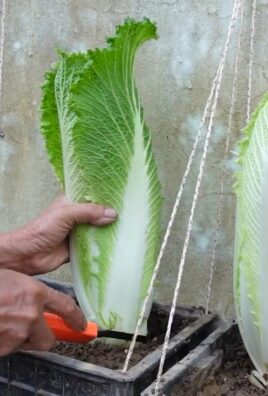
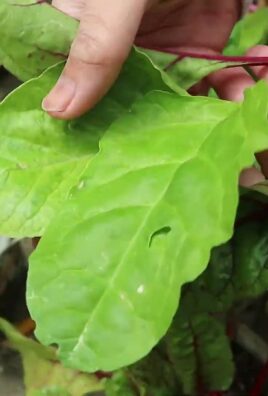
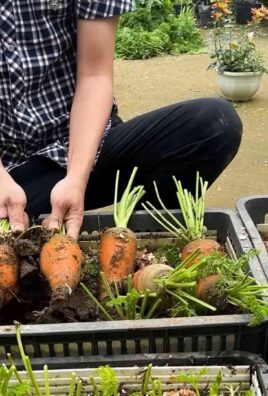
Leave a Comment